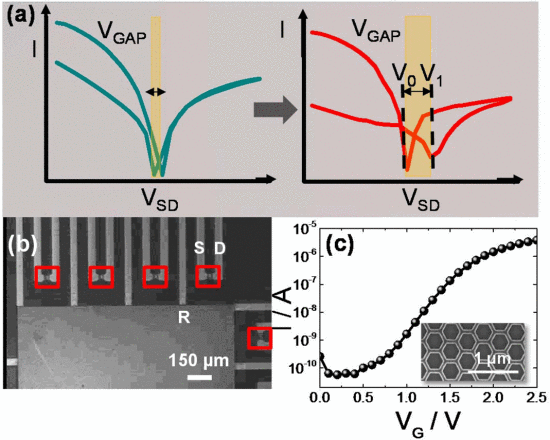Memristor biosensors are electronic systems very recently born electronic systems in the quest for highly sensitive biodetection approaches. The presence of charged species in the vicinity of a semiconductor channel connecting a source and a drain electrode opens a voltage gap between the two current minima in the semi-logarithmic output curve. Despite the tremendous sensitivity demonstrated in the past, the initial state of the gap limits the charge sign of the analyte to be detected, i.e. with an initial closed gap the detection of analytes with a gap-closing effect will remain challenging. Here, we propose a gap controlling process using a third electrode that mimics the presence of charged molecules of the desired sign. We test the function of the gap-control terminal via a back-gate in dry condition and we demonstrate the operation in liquid environment using a top-gate electrode. Finally, toward (bio)chemical sensing applications, we discriminate solutions with different pH values. The hereby proposed method is critical to allow broadening the range of analytes that can be sensed directly in liquid environment regardless their charge sign.

Memristor biosensors are electronic systems very recently born electronic systems in the quest for highly sensitive biodetection approaches. The presence of charged species in the vicinity of a semiconductor channel connecting a source and a drain electrode opens a voltage gap between the two current minima in the semi-logarithmic output curve. Despite the tremendous sensitivity demonstrated in the past, the initial state of the gap limits the charge sign of the analyte to be detected, i.e. with an initial closed gap the detection of analytes with a gap-closing effect will remain challenging. Here, we propose a gap controlling process using a third electrode that mimics the presence of charged molecules of the desired sign. We test the function of the gap-control terminal via a back-gate in dry condition and we demonstrate the operation in liquid environment using a top-gate electrode. Finally, toward (bio)chemical sensing applications, we discriminate solutions with different pH values. The hereby proposed method is critical to allow broadening the range of analytes that can be sensed directly in liquid environment regardless their charge sign.
